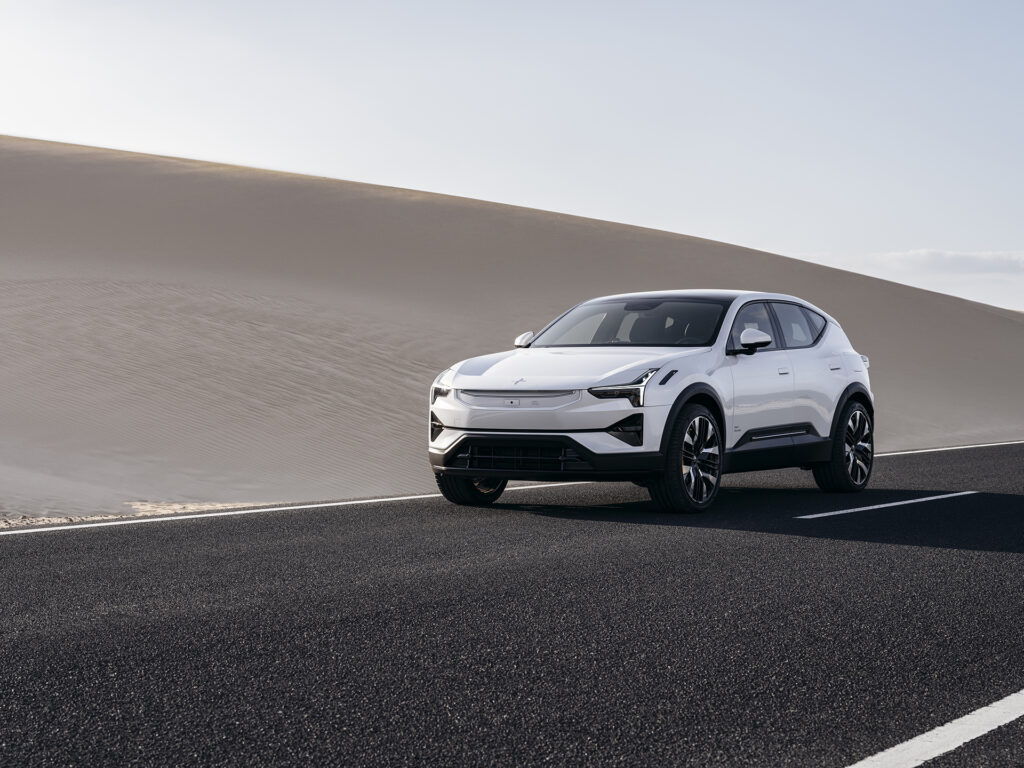Swedish electric performance car maker Polestar has revealed the Polestar 3 electric performance SUV with a price starting from £79,900 OTR.
The vehicle has been launched with a dual-motor configuration and a power bias towards the rear. The standard car produces a total of 360 kW (489 hp) and 840 Nm of torque. With the optional performance pack, total output increases to 380 kW (517 hp) and 910 Nm.
Adjustable one-pedal drive is included, as well as an electric Torque Vectoring Dual Clutch function on the rear axle, which was first developed for Polestar 1. A decoupling function is also available for the rear electric motor, allowing the car to run only on the front electric motor to save energy under certain circumstances.
Advanced chassis control is provided by dual-chamber air suspension as standard, allowing Polestar 3 to adapt between comfort and dynamic suspension characteristics, and the car can adjust its active damper velocity electronically once every two milliseconds (500 Hz).
A 111kWh battery pack provides the SUV with a driving range of up to 379 miles WLTP. It is also equipped for bidirectional charging, enabling future potential for vehicle-to-grid and plug-and-charge capabilities.
The SUV comes equipped with a full-length panoramic glass roof, all-LED lighting inside and out, retractable door handles with proximity sensing, and 21-inch alloy wheels. It is fitted with a 25-speaker audio system from Bowers & Wilkins with 3D surround sound and Dolby Atmos capability, soft-closing doors, a head-up display, and Pilot Assist.
Available to order from the second quarter of 2023, the optional Pilot Pack with LiDAR from Luminar will add an additional control unit from NVIDIA, three cameras, four ultrasonic sensors and cleaning for the front- and rear-view cameras, providing accurate real-time data about the car’s surroundings especially in the long-range field. This enables enhanced 3D scanning of the car’s surroundings in greater detail and helps prepare the car for autonomous driving.
“Polestar 3 is a powerful electric SUV that appeals to the senses with a distinct, Scandinavian design and excellent driving dynamics,” said Thomas Ingenlath, Polestar CEO.
The SUV has a new aerodynamic profile, featuring a front aero wing integrated into the bonnet, an aero wing integrated into the rear spoiler, and rear aero blades.
Polestar 3 is the first car from the brand to feature centralised computing with the NVIDIA DRIVE core computer, running software from Volvo Cars, the company said. Serving as the AI brain, NVIDIA’s high-performance automotive platform processes data from the car’s multiple sensors and cameras to enable advanced driver-assistance safety features and driver monitoring.
Android Automotive OS is the in-car operating system, co-developed with Google and fronted by a 14.5-inch centre display.
The infotainment system is powered by a next-generation Snapdragon Cockpit Platform from Qualcomm Technologies, Inc. In terms of safety, the interior radar sensors can detect sub-millimetre movements in the interior of the car to help protect against accidentally leaving children or pets inside. The system is also linked to the climate control system to avoid heat stroke or hypothermia.
Inside, two closed-loop driver monitoring cameras bring leading eye tracking technology from Smart Eye to a Polestar for the first time, geared towards safer driving, the company said. The cameras monitor the driver’s eyes and can trigger warning messages, sounds and even an emergency stop function when detecting a distracted, drowsy or disconnected driver.
Production for initial launch markets is planned to begin in Volvo Cars’ facility in Chengdu, China, in an incremental ramp-up phase from mid-2023, with first deliveries expected in the fourth quarter of 2023, the company said. Additional manufacturing at Volvo Cars’ Ridgeville, South Carolina facility in the United States, is expected to follow towards the middle of 2024.
